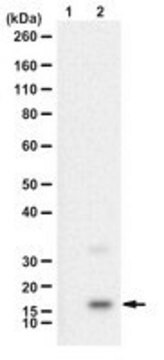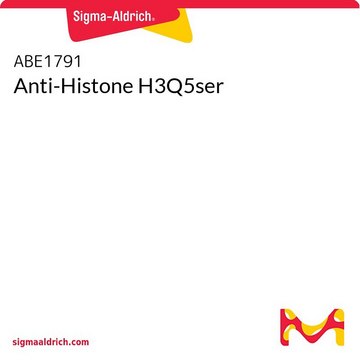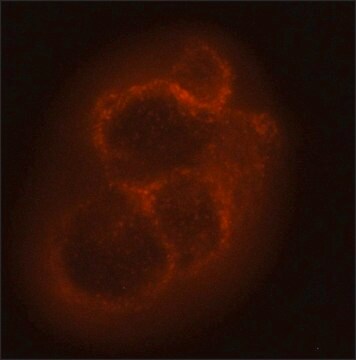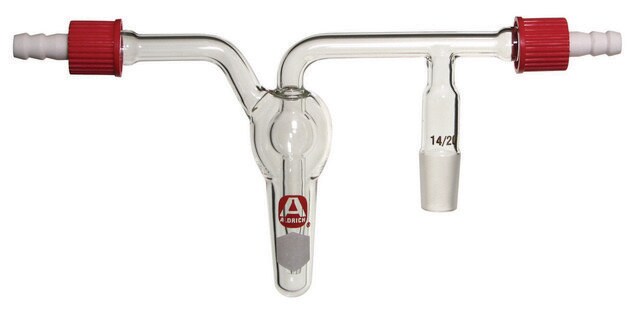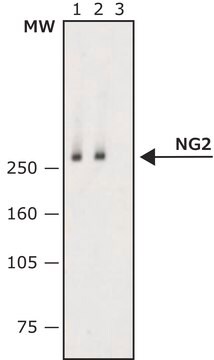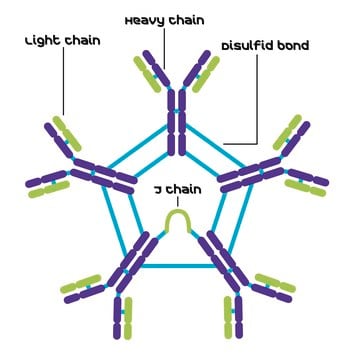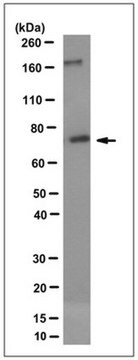ABE2605
Anti-H3K4me3Q5histaminyl
Sinónimos:
Histone H3 trimethylated Lysine 4 Histaminylated glutamine5
About This Item
WB
western blot: suitable
Productos recomendados
origen biológico
rabbit
Nivel de calidad
conjugado
unconjugated
forma del anticuerpo
purified antibody
tipo de anticuerpo
primary antibodies
clon
polyclonal
mol peso
calculated mol wt 15.51 kDa
reactividad de especies
human
envase
antibody small pack of 100 μg
técnicas
dot blot: suitable
western blot: suitable
isotipo
IgG
secuencia del epítopo
N-terminal
Nº de acceso Protein ID
Nº de acceso UniProt
Condiciones de envío
ambient
modificación del objetivo postraduccional
trimethylation (Lys4), histaminylation (Gln5)
Información sobre el gen
human ... HIST3H3(8290)
Descripción general
Especificidad
Inmunógeno
Aplicación
Evaluated by DOT Blot analysis with K3K4me3Q5Histaminyl peptide.
Dot Blot Analysis: A 1:1,000 dilution of this antibody detected H3K4me3Q5Histaminyl peptide, but not the unmodified H3Q5 peptide.
Tested Applications
Western Blotting Analysis: A 1:2,000 dilution from a representative lot detected Histone H3.1 trimethylated on lysine 4 and histaminylated on glutamine 5 (H3K4me3Q5Histaminyl) in RN46A, KU812, SK-N-SH & HEK293T whole cell lysates. (Data courtesy of Dr. Ian Maze s Lab, Icahn School of Medicine at Mount Sinai, New York).
Note: Actual optimal working dilutions must be determined by end user as specimens, and experimental conditions may vary with the end user
Forma física
Almacenamiento y estabilidad
Otras notas
Cláusula de descargo de responsabilidad
¿No encuentra el producto adecuado?
Pruebe nuestro Herramienta de selección de productos.
Código de clase de almacenamiento
12 - Non Combustible Liquids
Clase de riesgo para el agua (WGK)
WGK 1
Punto de inflamabilidad (°F)
Not applicable
Punto de inflamabilidad (°C)
Not applicable
Certificados de análisis (COA)
Busque Certificados de análisis (COA) introduciendo el número de lote del producto. Los números de lote se encuentran en la etiqueta del producto después de las palabras «Lot» o «Batch»
¿Ya tiene este producto?
Encuentre la documentación para los productos que ha comprado recientemente en la Biblioteca de documentos.
Nuestro equipo de científicos tiene experiencia en todas las áreas de investigación: Ciencias de la vida, Ciencia de los materiales, Síntesis química, Cromatografía, Analítica y muchas otras.
Póngase en contacto con el Servicio técnico